Note: The treatments and medications mentioned in the article are for reference by TCM practitioners only. Patients should not take them without professional guidance, as they do so at their own risk.
Introduction: Sharing insights through writing, deconstructing the “spoon tongue.” Spoon tongue, in simple terms, refers to a depression at the front of the tongue resembling a spoon. Its pathogenesis mainly involves: stagnation + sinking of the upper qi.
Regarding the spoon tongue, I have seen it mentioned in many articles and books on tongue diagnosis, but I am not sure who first proposed it. We don’t need to worry about that; we just need to analyze its pathogenesis.
The spoon tongue, as the name suggests, refers to a depression at the front of the tongue that looks like a spoon, with a concave center and raised edges. Here is a picture of a spoon:
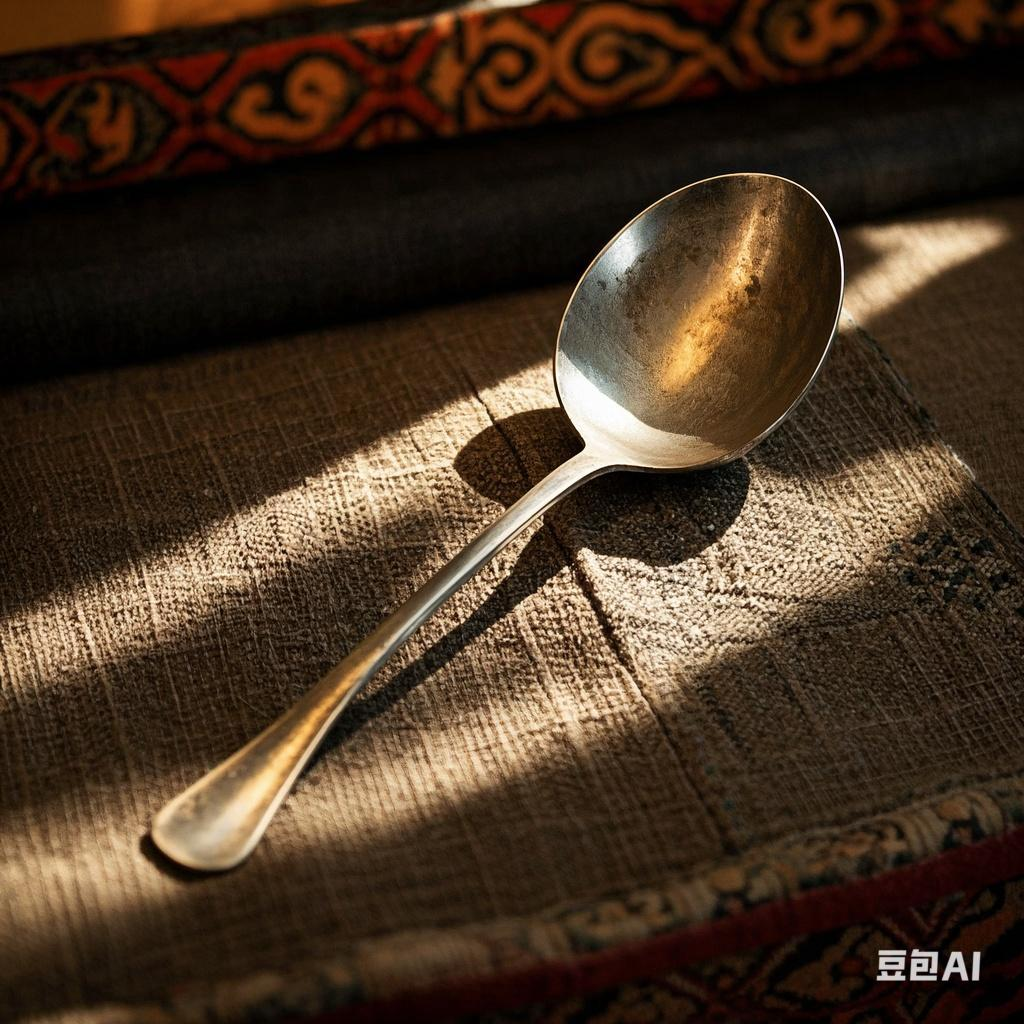
I. Redefining Spoon Tongue: The Tongue Sign Code of Upper Jiao Deficiency and Stagnation
1. Morphological Features and Naming Basis
- Morphological Description: The front of the tongue is depressed in a spoon shape, with raised edges, corresponding to the upper jiao heart and lung area (see Tongue Sign Chart 1).
- Core Pathogenesis:
- Deficiency: Sinking of the upper qi (insufficient pectoral qi) → Dysregulation of the qi transformation of the lung, spleen, and kidney triple jiao.
- Excess: Stagnation and obstruction (intertwined qi, blood, phlegm, and stasis) → Clear qi fails to ascend, turbid qi fails to descend.
There are various opinions on the pathogenesis of spoon tongue. After reading them, I felt they were not thorough and difficult to understand, making them impractical for use. Therefore, I reanalyzed it, and it has proven effective in clinical practice, so I am sharing it here.
Spoon tongue has a depression at the front, indicating a deficiency in that area. This area corresponds to the upper jiao, indicating an upper jiao deficiency. Zhang Xichun called this condition the sinking of the upper qi, which is essentially what textbooks refer to as pectoral qi deficiency.
The heart and lungs are in the upper jiao, so a deficiency in the upper qi directly affects the function of the heart and lungs. Patients often present with palpitations, shortness of breath, fatigue, aversion to wind, and sweating upon exertion.
Affecting heart function, insufficient heart qi leads to palpitations as the heart compensates by pumping blood vigorously; affecting lung function, insufficient qi leads to shortness of breath. Overall, a deficiency in qi leads to fatigue.
Insufficient upper qi also leads to insufficient defensive qi, resulting in aversion to wind and sweating upon exertion.
The circulation of qi in the body follows the sequence: originating from the lower jiao’s original qi – generated by the middle jiao’s stomach qi – ascending to the upper jiao’s great qi – dispersing throughout the body’s defensive qi.
This underlying logic is not invented by anyone; it naturally exists.
2. Theoretical Origins
- The “Yellow Emperor’s Inner Canon” on the Law of Qi Movement: “When food enters the stomach, the essence and qi overflow, ascending to the spleen. The spleen disperses the essence, which ascends to the lungs, regulates the water passages, and descends to the bladder, with the essence spreading to the five organs.” This reveals the general law of qi movement in the body.
“Food enters the stomach → Spleen disperses the essence → Ascends to the lungs → Regulates the water passages → Descends to the bladder” (Law of Qi Movement). - Zhang Xichun’s “Sinking of the Great Qi” Theory:
“The great qi originates from the original qi, is nourished by food and drink, and resides in the chest” (from “The Integration of Chinese and Western Medicine”).
Some articles also suggest that spoon tongue can indicate male premature ejaculation, which is also based on evidence.
The lungs and kidneys have a metal-water intergenerative relationship. Insufficient lung qi leads to kidney water deficiency. Additionally, heart qi, especially heart fire, needs to descend to the lower jiao to supplement kidney yang and warm kidney water. Now, with deficient heart qi, insufficient kidney yang leads to cold kidney water.
Thus, spoon tongue can lead to both kidney yin and yang deficiency, causing various male issues such as impotence, premature ejaculation, and nocturnal emissions.
Therefore, spoon tongue, if it progresses further, will inevitably develop into a “wish-fulfilling tongue,” where the root of the tongue will also be depressed. You can understand this by reading this article.
Technique Chapter | Deconstructing the Wish-Fulfilling Tongue in Tongue Diagnosis (Deficiency of the Lower Yuan, Sinking of the Upper Jiao’s Great Qi)
The above mainly discusses the sinking of the upper qi. According to the law of qi movement in the body, we can understand that insufficient upper qi, aside from its own deficiency, may also be caused by deficiencies in the middle and lower jiao, specifically the spleen and kidneys.
This is from the perspective of deficiency. From the perspective of excess, it is a stagnation issue, which is also very common, especially liver qi stagnation or phlegm and stasis stagnation in the upper jiao, where the upper jiao is occupied by pathogenic factors, preventing the clear qi from ascending.
In my treatment process, I have encountered such cases. If there is stagnation, it must be resolved; otherwise, attempting to raise the great qi will cause the patient to feel particularly stuffy near the xiphoid process, as the qi gets stuck there, which is very vivid.
In summary, the pathogenesis of spoon tongue is: sinking of the upper qi (deficiency of the lungs, spleen, and kidneys), stagnation (of qi, blood, phlegm, cold, heat, etc.)
In terms of medication, I commonly use Zhang Xichun’s series of Raising the Sinking Decoction, Qi-Supplementing Decoction, Shengmai Drink, Xuefu Zhuyu Decoction, Li Dongyuan’s Banxia Baizhu Tianma Decoction, Er Chen Decoction, and Wendan Decoction.
II. Analysis of 11 Tongue Sign Charts and Adjustment Plans
1. Classification of Typical Spoon Tongues
Let’s look at specific tongue signs. Due to limited energy, I will focus on analyzing the tongue signs, with detailed medication analysis to be considered in the next edition.
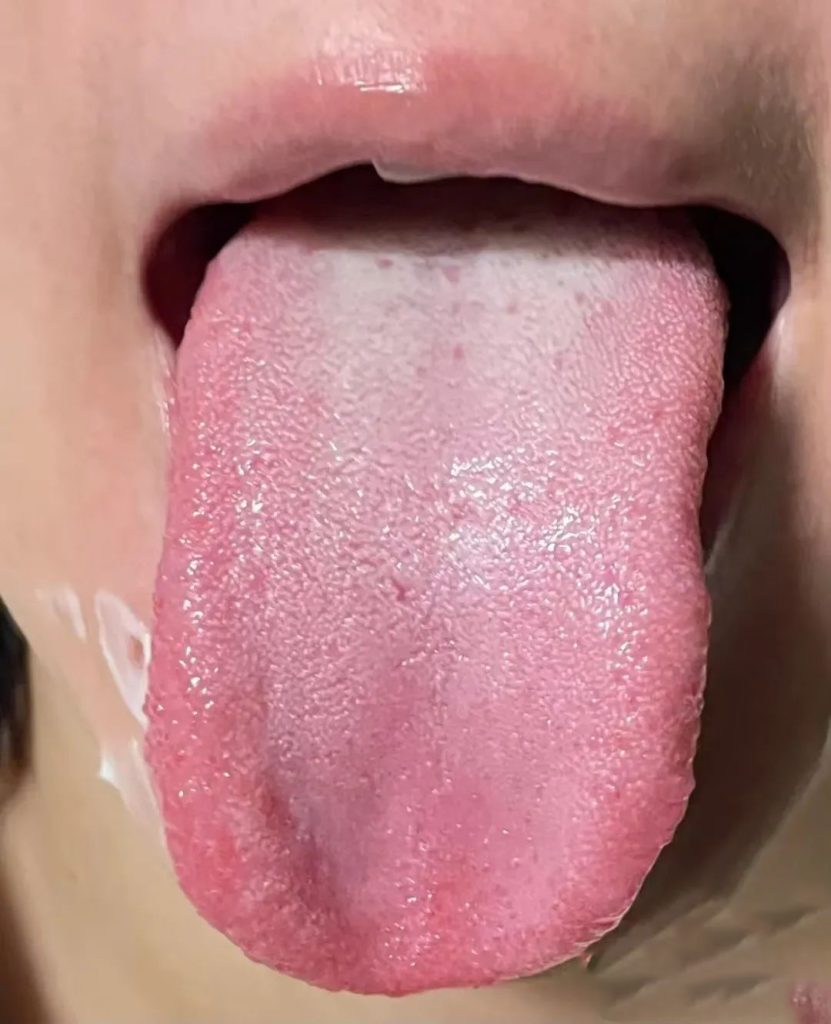

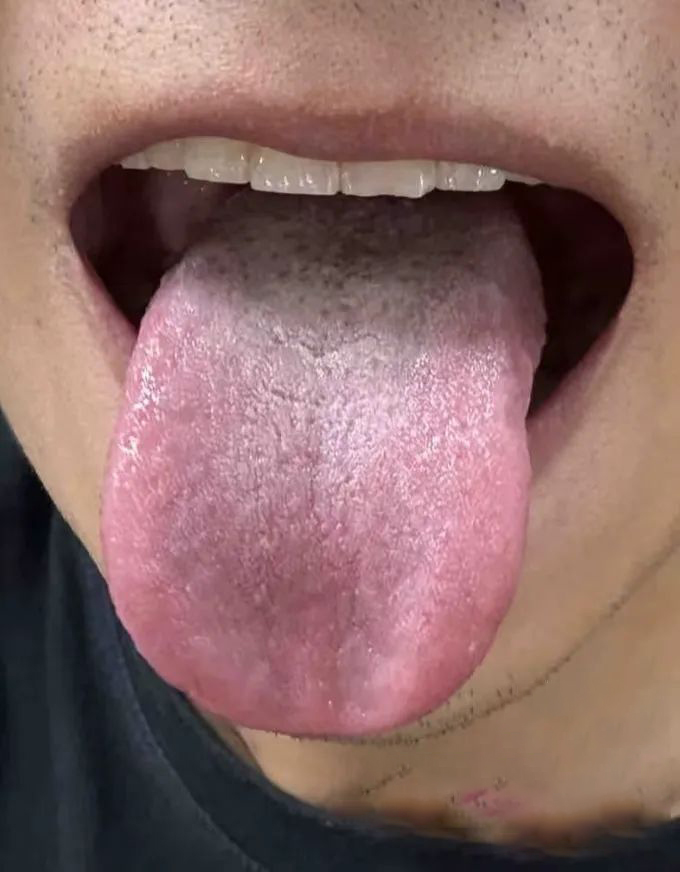

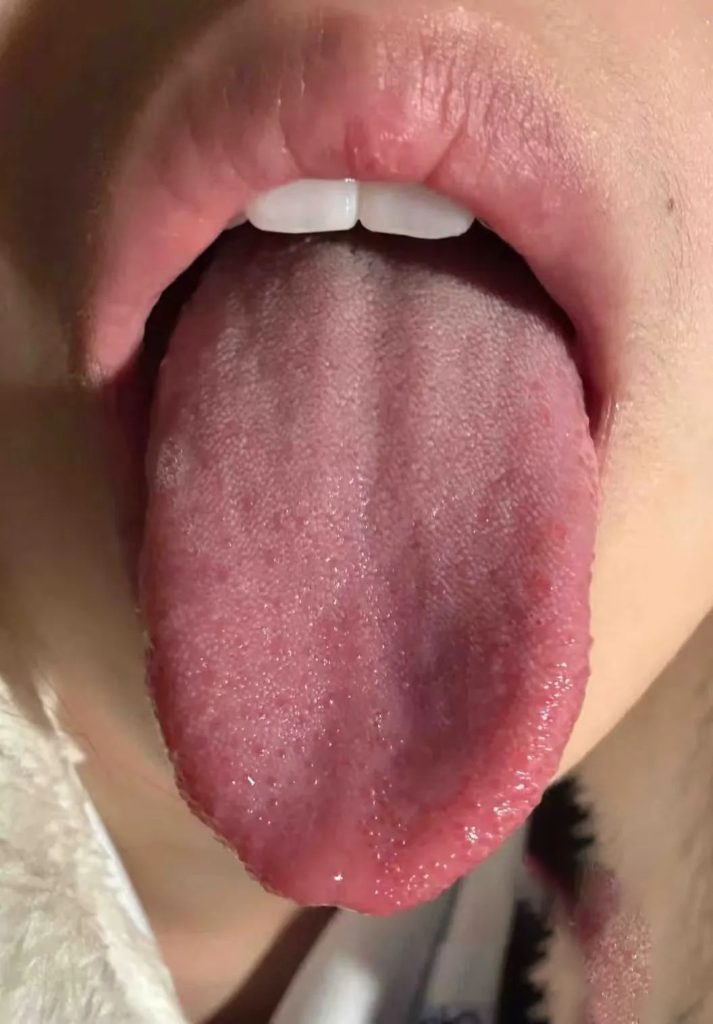
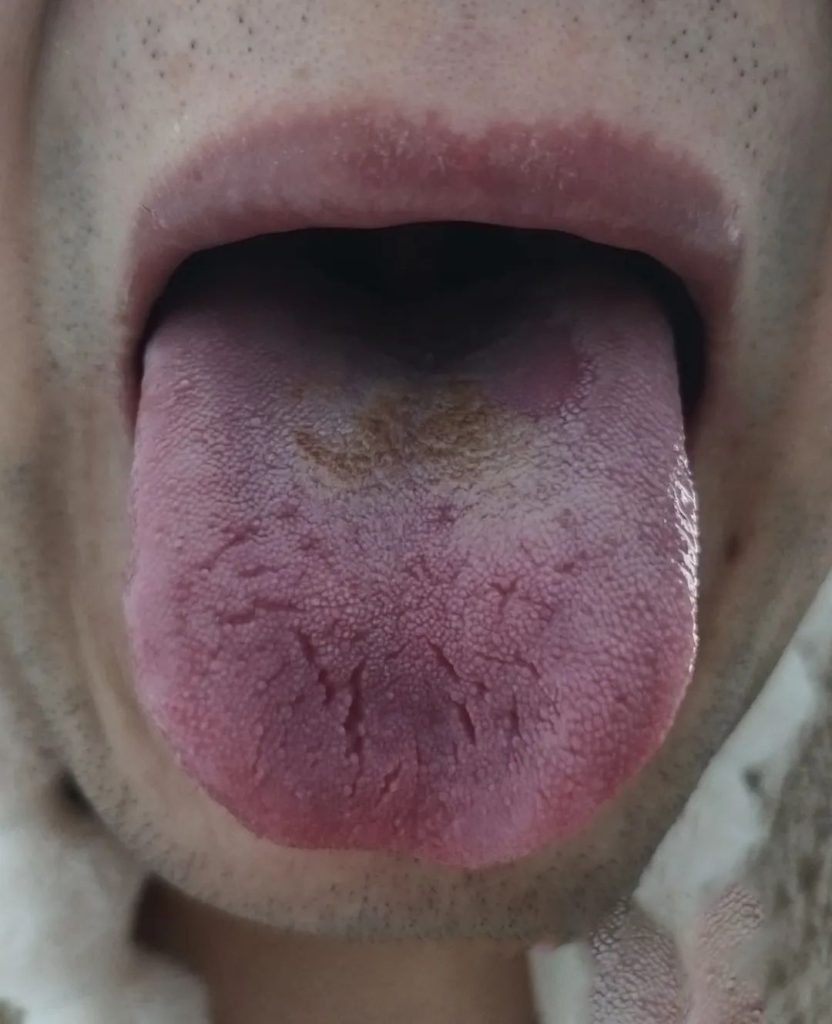
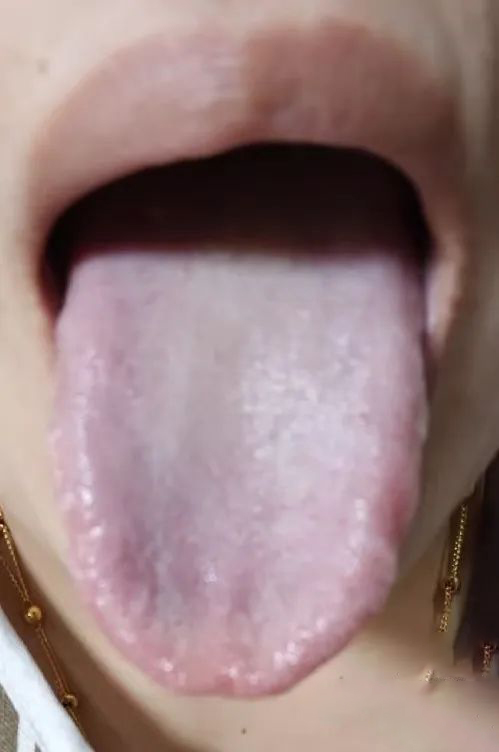
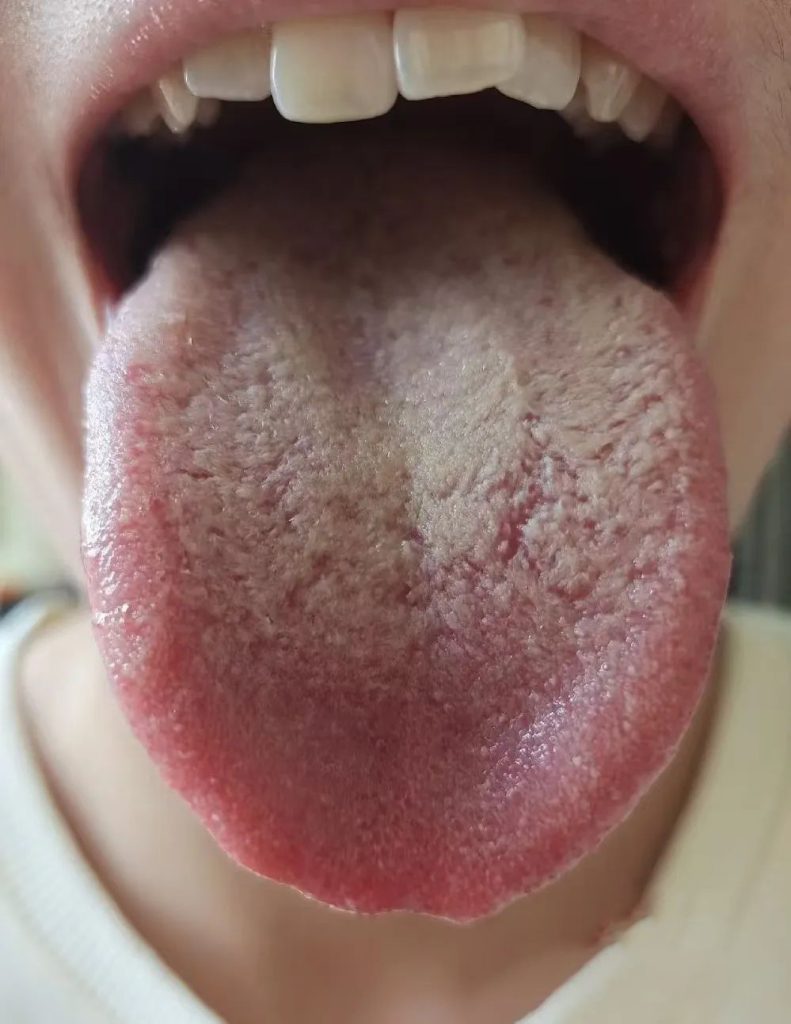
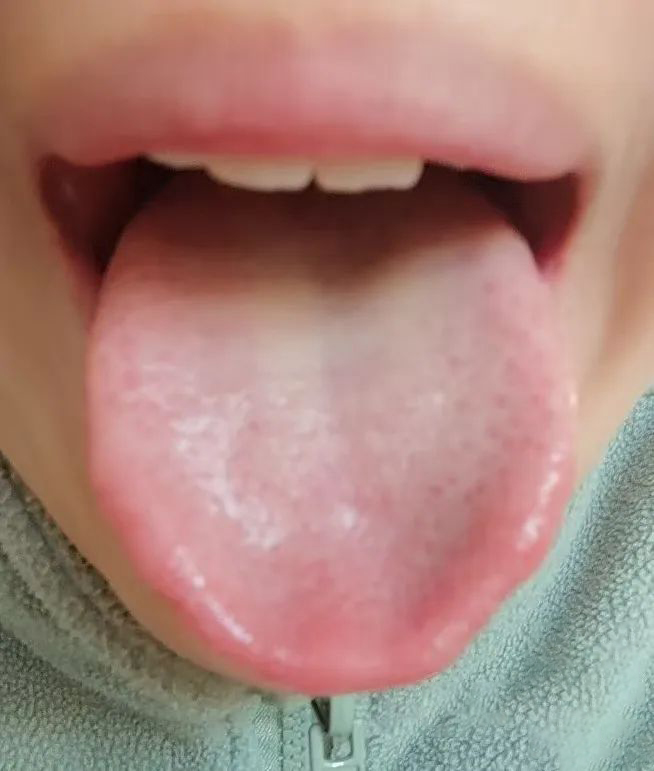
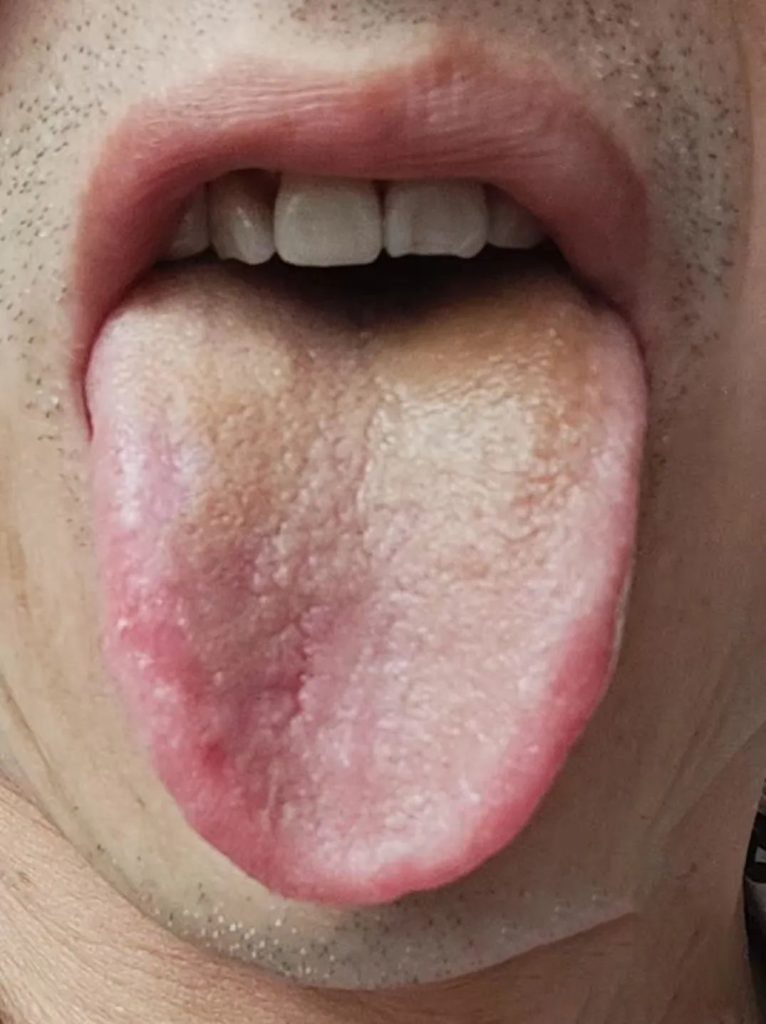
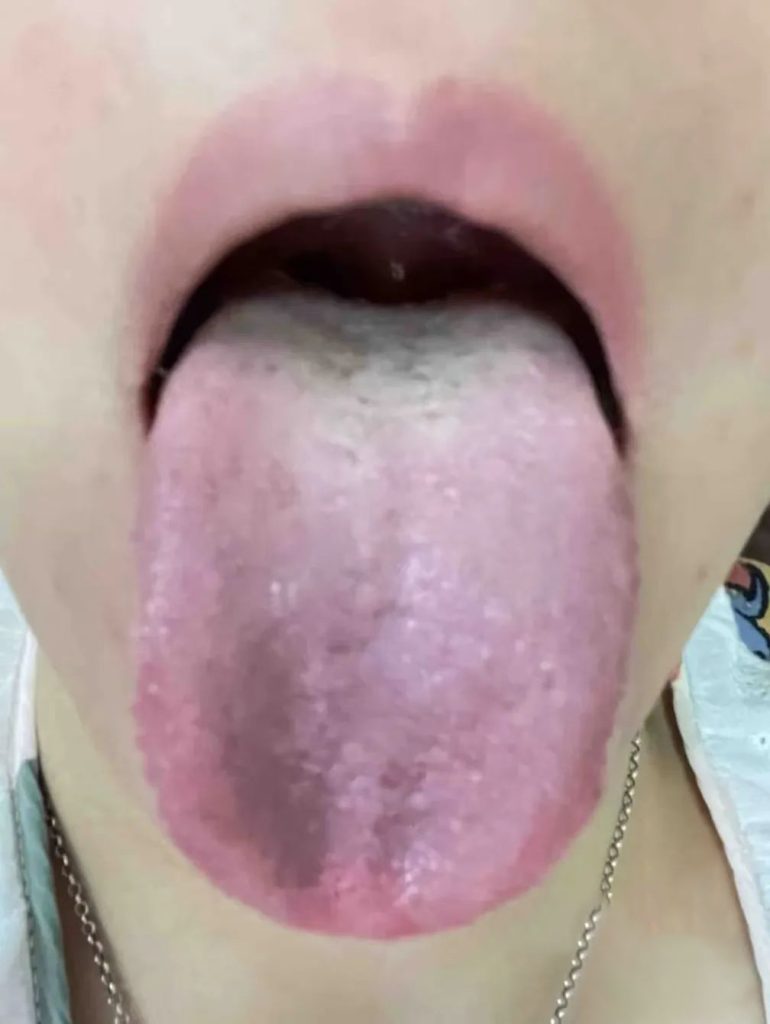
2. Medication Logic for Typical Spoon Tongues
| Tongue Sign Features | Core Pathogenesis | Recommended Formulas |
|---|---|---|
| Deep pit at the front + cracks | Stagnation turning into fire + qi and yin deficiency | Xuefu Zhuyu Decoction + Shengmai Drink |
| Depression at the front + white greasy coating at the root | Sinking of the great qi + spleen and kidney yang deficiency | Buzhong Yiqi Tang + Yougui Pill |
| Swelling at the front + yellow greasy coating | Phlegm-heat stagnation | Wendan Decoction + Sanren Decoction |
| Ice cap tongue + spoon tongue combination | Upper heat and lower cold, mixed deficiency and excess | Banxia Xiexin Decoction + Jiaotai Wan |
3. Analysis of Classic Formulas
- Modified Raising the Sinking Decoction:
Astragalus (raising the great qi) + Bupleurum (soothing the liver and resolving stagnation) + Platycodon (carrying the medicine upward) Anemarrhena (nourishing yin and clearing heat) + Cimicifuga (raising yang and lifting the sunken) → Dual-channel regulation of qi movement - Daoist Water-Fire Pill:
“Scrophularia activates kidney water → nourishes heart fire; Salvia descends heart fire → warms kidney water” (communicating the heart and kidneys, resolving upper heat and lower cold). - Here, let’s discuss the issue of using Astragalus to raise the great qi, which I summarize into three points, as follows:
First, if there is significant stagnation like phlegm-dampness, I usually first clear the stagnation. Once the pathways are clear, then consider using Astragalus to raise the great qi. Sometimes, once the stagnation is cleared, if the deficiency is not that severe, the qi will naturally ascend. If used simultaneously, if the stagnation is not cleared in time, the qi can easily stagnate near the xiphoid process.
Second, if you encounter a wish-fulfilling tongue with signs of kidney not sealing, needing to use Cornus, raw dragon bone, and raw oyster to restrain floating yang, I usually wait until the sealing is almost complete, and symptoms like toothache, sore throat, and mouth ulcers caused by floating yang are treated, before considering using Astragalus to raise the great qi.
Third, if the stagnation is not that severe, and the lower jiao is not deficient enough to need sealing, you can use Astragalus with confidence.
Additionally, when using Astragalus, there is a well-known Astragalus-Anemarrhena method, which you can learn about by flipping through Zhang Xichun’s “The Integration of Chinese and Western Medicine”.
III. Clinical Case Studies and Dynamic Adjustment Guidelines
1. Analysis of Typical Medical Cases
- Case 1: Male, 42 years old, spoon tongue with chest tightness and shortness of breath, treated with Buzhong Yiqi Tang + 15g of Salvia, and the tongue gradually flattened after 2 weeks.
- Case 2: Female, 38 years old, spoon tongue with yellow greasy coating, irregular menstruation, treated with Wendan Decoction + 30g of Leonurus, and the coating turned thin and white after 1 month.
2. Adjustment Cycle Planning
- Stagnation-Breaking Phase (1-2 weeks): Use Chaihu Shugan San as the base, adding Cyperus and Lindera to soothe the liver.
- Raising the Sinking Phase (3-4 weeks): Use Buzhong Yiqi Tang + Cimicifuga, combined with breathing and qigong exercises.
- Consolidation Phase (5-6 weeks): Alternate between Guipi Wan and Xiaoyao Wan, using yam and lotus seeds for dietary therapy.

Leave a Reply